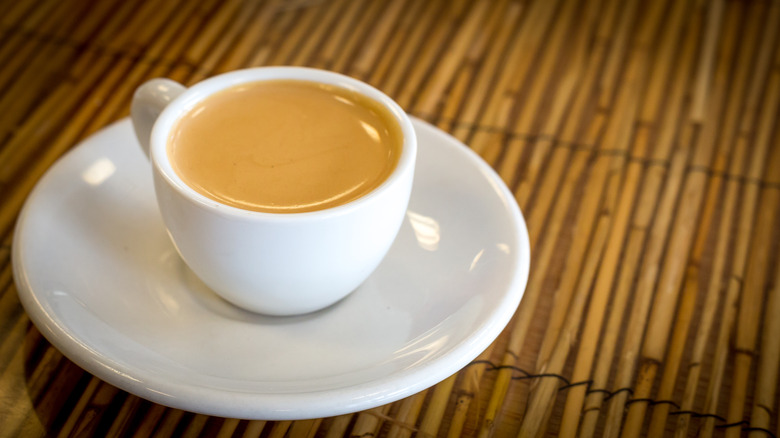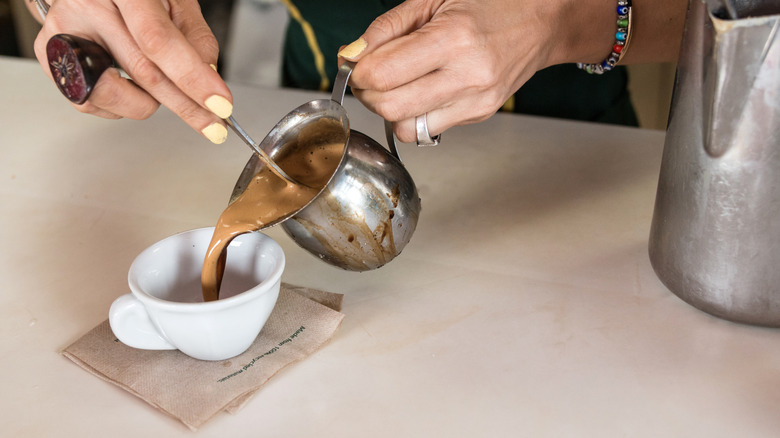What Is A Cuban Coffee And What Does It Taste Like?
When you think of a cup of coffee, you most likely think of waking up in the morning, turning on the coffee maker, and brewing up a nice cup of joe to start your day. But coffee isn't so one-dimensional; there are many different ways of drinking it around the world that give this beverage all kinds of flavors and purposes. A Cuban coffee, for example, is perhaps best enjoyed after lunch or dinner rather than in the morning.
A Cuban coffee, often referred to as a café Cubano or a cafécito in its most straightforward form, is much sweeter than traditional coffee, making it the perfect way to end a meal. It's not so easily found in the United States (though Miamians know it well), but if you dine at a Cuban restaurant, it's a can't-miss postprandial treat.
A few elements set this type of coffee apart from the rest; it's made with espresso, for one thing, but it's also enhanced with a good amount of sugar while it's brewed. The sweet stuff is incorporated using a special method that lends the drink the smoothness of dalgona coffee but hot and far more intensely coffee-flavored.
Cuba's coffee industry and the cafécito
A café Cubano has just two ingredients: espresso and sugar. A small amount of the brewed espresso is whipped with the sugar and then added to the finished brew; it sometimes takes a few minutes to get the right consistency, but it results in a sweet, bold, perfectly foamy beverage. With the noticeable presence of the sugar, this Cuban coffee becomes more of a dessert sipper than a morning drink, but there's no harm in enjoying one at any point in the day.
Coffee has a lengthy history, and Cuba got its first whiff of the stuff back in the mid-1700s after the first coffee plants were brought to the island. Around 50 years later, the industry was thriving, and by the mid-1900s, Cuba was one of the world's leading coffee exporters. However, things declined quickly by the early 1960s, when the country's economy was heavily damaged after the Cuban revolution and U.S. sanctions. Even so, Cuba is where you'll find the first UNESCO heritage site dedicated to the crop, and efforts have been made to revitalize the industry through organic production. While today's café Cubanos enjoyed in the U.S. aren't typically made with Cuban-grown beans, they are still brewed the same way.
The café Cubano relies on technique
You can't just pour some sugar into the brewing espresso and hope for the best. Aside from the flavors of the café Cubano, the appearance of the drink matters as well. There's no need to use an espresso machine here; café Cubanos are traditionally made in moka pots, or basically a stovetop espresso maker. As it starts to brew, the trick is to pour just a splash of the coffee into a bowl or cup with the sugar and whisk it by hand (or mix it with a spoon), taking as much time as needed for the concoction to foam. That frothy, luxurious topping, known as espuma or espumita, is an integral part of creating the drink.
So, in its simplest form, a café Cubano is just an espresso shot with sugary foam. But it's the technique of using the moka pot and creating the frothy topping by hand that makes this style of coffee taste so unique; it's also essential to building the most traditional version of the drink.


